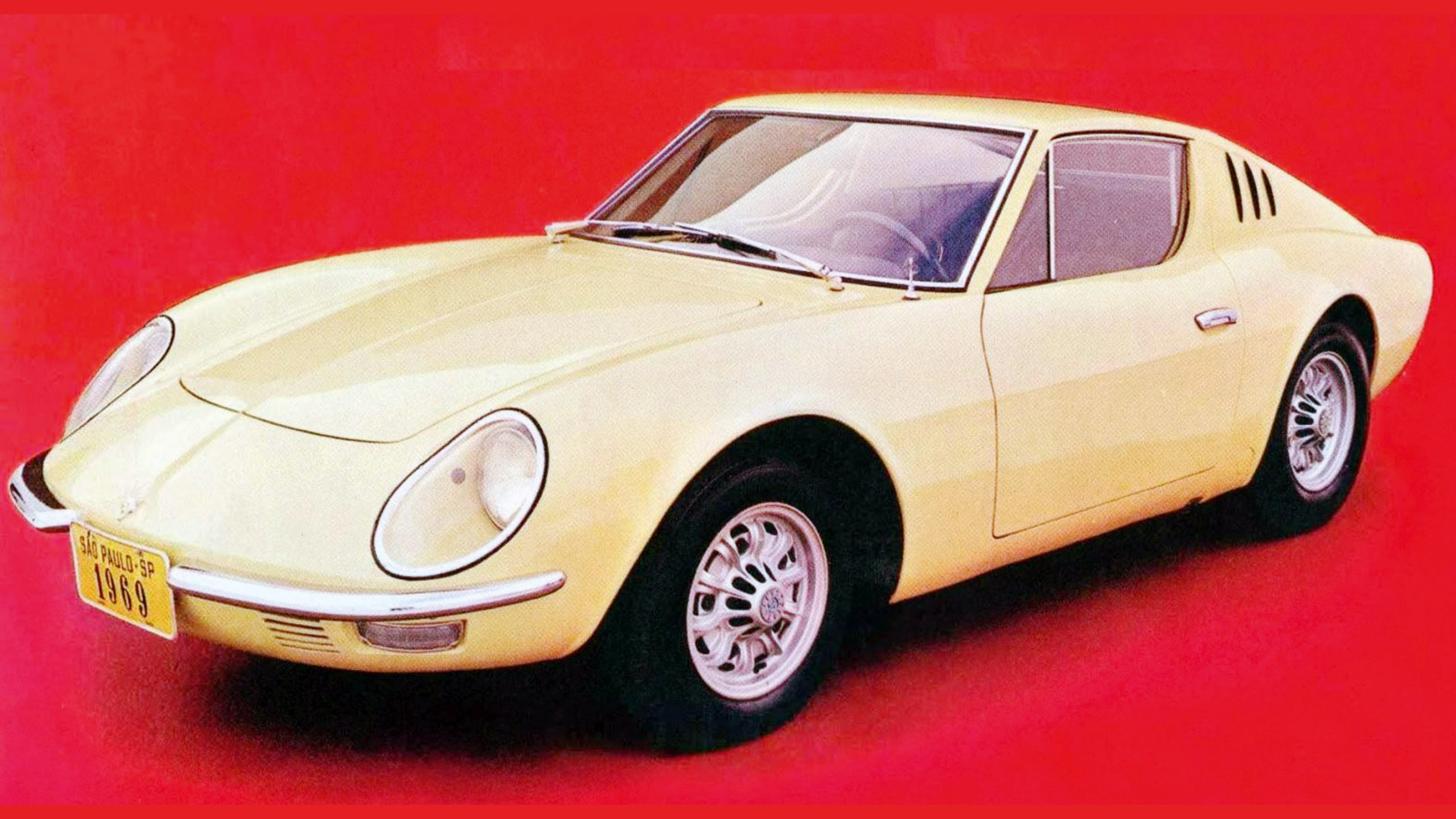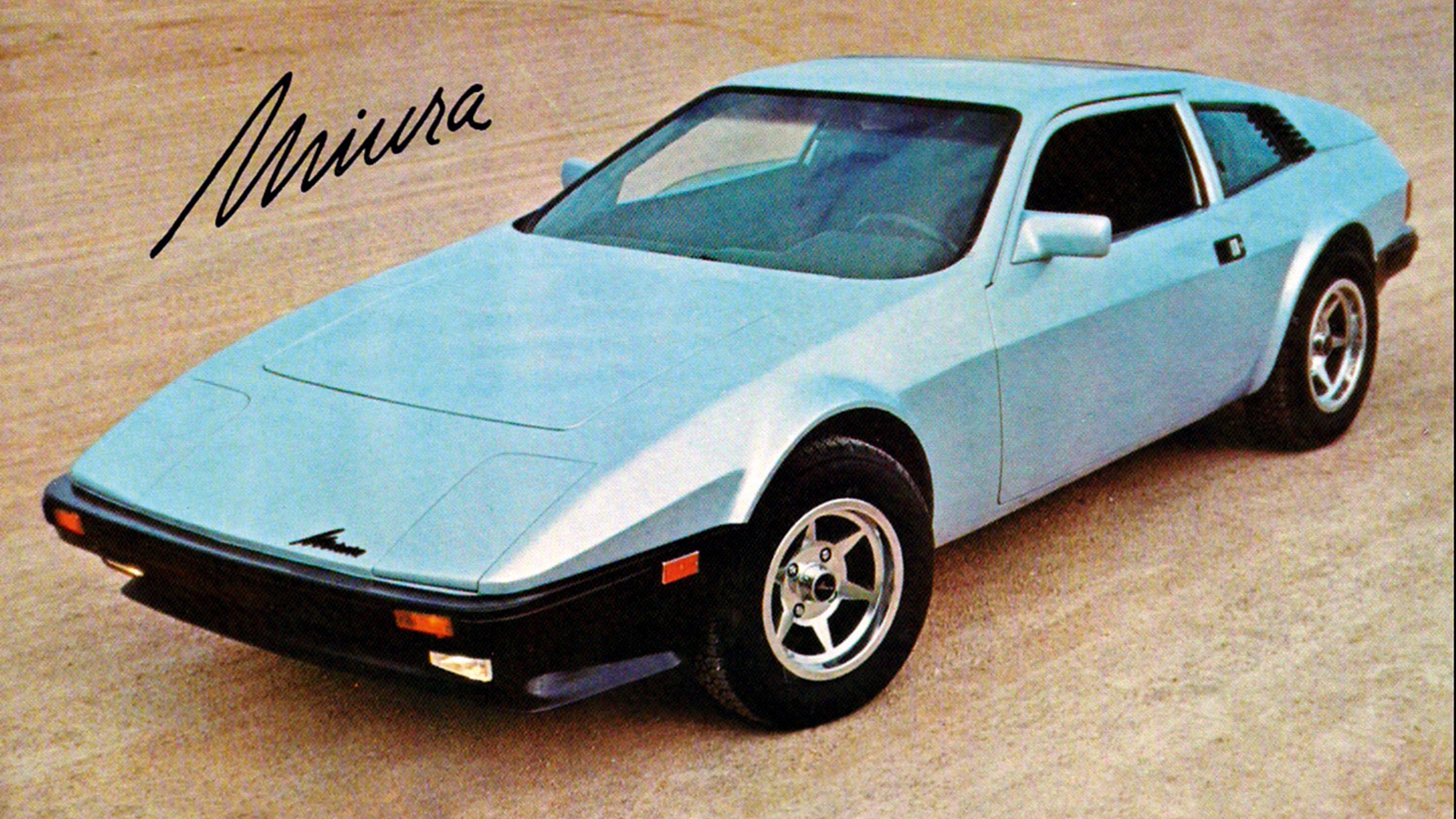-
 © David Marques
© David Marques -
 © David Marques
© David Marques -
 © David Marques
© David Marques -
 © David Marques
© David Marques -
 © David Marques
© David Marques -
 © David Marques
© David Marques -
 © David Marques
© David Marques -
 © David Marques
© David Marques -
 © David Marques
© David Marques -
 © David Marques
© David Marques -
 © David Marques
© David Marques
-
A ban on imported models led to a whole industry of homegrown alternatives...
Brazil has never really been famous for its sports cars, but between the 1960s and early '90s a whole host of domestically produced models appeared.
Much of that growth was down to the passing of a 1976 decree that closed the market for imported cars; Brazilian sports cars existed before then, but post-'76 a huge number of new manufacturers sprung up to fill the gap.
In the early 1990s, however, an abrupt reopening of the market forced the independent firms to cease their suddenly unprofitable activities, never to be restarted.
The 10 examples here don’t necessarily reflect a chronological evolution, but rather the highly eclectic nature of this sector.
-
1. Brasinca 4200GT Uirapuru (1964)
The Uirapuru was the most famous brainchild of gifted Spanish engineer Rigoberto Soler. Not only was it the first sports car to be designed and produced in Brazil, it was also the first to top 200kph.
Produced by Brasinca, then the main supplier of steel to the Brazilian auto industry, the Uirapuru featured an in-house chassis and hand-crafted steel bodywork, and was sold for much the same price as an imported Mustang.
Powered by a 4.2-litre Chevrolet straight-six, it delivered 155bhp, while, with its trendy wrap-around rear window, the Uirapuru is sometimes mentioned as providing the ‘inspiration’ for Touring’s Jensen Interceptor.
After its public debut during the 1964 São Paulo Auto Show, production started in March 1965 and, after a minor interlude, ceased two years later. A total of 73 cars was built, including two convertibles and a single Gavião, a law-enforcement shooting-brake version.
-
2. Bianco S (1976)
Drawing lovers and haters in seemingly equal numbers, it is almost impossible to remain impartial on the Bianco S’ looks. It is also Italian coachbuilder Toni Bianco’s most renowned creation and, much to his later regret, he sold the project to the company that made its production viable.
Born out of the ashes of the Fúria racer, the Bianco S was actually quite a mild performer. It was built using the VW Brasília floorpan – including a 65bhp, 1.6-litre, air-cooled engine with two Solex 32 carburettors – without any major upgrades, despite its light glassfibre body.
Its low centre of gravity gave excellent handling, but the lack of height had the unfortunate side effect of giving an ergonomically disastrous cockpit.
Produced between 1976 and ’84, it also drew a lot of attention when it made an appearance at the 1978 New York Auto Show.
-
3. L’Automobile Ventura (1975)
Mainly focused on producing replicas, and therefore guaranteeing itself a slice of the US market, L’Automobile was co-founded in 1975 by Argentinian entrepreneurs Claudio Campuzzano and Guillermo Pardo. It not only succeeded in creating an in-house sports car, but also consoled those who missed VW’s SP2.
Both cars featured very similar design and powertrain layouts: a combination of a long front and a rear-mounted engine. Sadly, performance figures weren’t on a par with its elegant profile due to the use of the VW Variant’s air-cooled engine, taking 17 endless seconds to get itself from 0-100kph and clocking a mere 154kph (96mph).
On the other hand, great care was taken during the manufacturing process, as proven by the fact that only eight cars were produced each month. The Ventura even gained acceptance in the American market, where it was available alongside L’Automobile replicas as a kit car in order to avoid tighter safety standards.
-
4. Farus ML-929 (1980)
Farus (FAmiglia and RUSso) was a Fiat-powered rear-mid-engined sports car. It was the brainchild of Alfio Russo and his son Giuseppe, both Italians and owners of Italmecânica, a food machinery manufacturer based in Minas Gerais.
Development of the ML-929 began in 1978, with a public debut in July 1980 and production starting in March 1981. It featured a steel backbone chassis, all-wheel disc brakes and MacPherson struts – technically far ahead of many of its rivals.
Initially equipped with the same 72bhp 1.3-litre engine that was fitted to the Dardo (no.6 in this list), plus a miraculously revamped version of its gearbox, its performance figures improved considerably with the introduction of the VW Passat TS 1.6-litre, Chevrolet Monza 1.8- and 2-litre (by when it had been renamed Farus Beta) and VW AP-2000 engines.
Plans for a US-spec export version using the Chrysler Laser powertrain almost came to fruition in the late 1980s, but production ceased in 1990 when the company closed down.
-
5. Aurora 122-C (1990)
One of the last Brazilian sports cars to be created, shortly before the market reopened in the early ’90s, the 122-C was meant to be the era’s ultimate dream machine.
Bearing a clear resemblance to the Ferrari F40, its development was led by motorsport engineer Oduvaldo Barranco in partnership with Argentinian colleagues, and it boasted a highly complex glassfibre monocoque. The engine was borrowed from the Chevrolet Monza, but stretched to 2.2 litres and fitted with a turbocharger to give 214bhp.
After its public debut during the 1990 São Paulo Auto Show – among the imported cars that would finally become available after so many years – it sadly became clear that the Aurora was a stillborn car technologically lagging far behind its foreign rivals. The absence of electronic fuel injection was probably the most glaring example. And, while the 122-C attracted 72 orders, only five cars were built in 1991.
-
6. Corona Dardo (1979)
You could think of this as being a clear Fiat X1/9 rip-off, but Fiat’s Brazilian arm not only endorsed its production but also offered distribution, technical assistance and a factory warranty.
Utilising the same powertrain as the 147 Rallye, it was created by Toni Bianco for Corona, a subsidiary of Caloi – a Brazilian bicycle manufacturer.
Sadly, the Dardo’s excessively high price couldn’t be justified. There were severe manufacturing problems with the glassfibre bodywork, not to mention the troublesome Fiat four-speed gearbox.
To add insult to injury, the 72bhp 1.3-litre ‘four’ hardly provided good performance – not even when upgraded to 1.5 litres and 96bhp. Production amounted to c300 cars between 1979 and 1985.
-
7. Hofstetter Turbo (1980)
Originally designed in 1973, the Hofstetter started to materialise in Switzerland in the hands of Brazilian-born millionaire Mario Richard Hofstetter. The first prototype was finished in 1980 – by which time he had moved back to Brazil – and featured a Ford engine plus Hewland transmission.
Development of a second prototype began in 1982. In spite of retaining most of the original design, it had to use the floorpan and powertrain from Brazilian cars – a turbocharged, 140bhp VW 1.8-litre was initially the best choice.
Its public debut took place during the 1984 São Paulo Auto Show, where its ‘spaceship’ looks generated 13 orders. Despite its great potential, fewer than 20 cars were built.
-
8. Puma GT (1966)
Developed from the GT Malzoni racer, which used a tuned DKW engine and glassfibre bodywork, the Puma GT evolved to become the most historically important sports car ever produced in Brazil.
Its two generations were created by Italian expat Rino Malzoni – the second of those, introduced in 1968 and using VW power, put the car on a steady commercial footing.
The ‘Mk2’ originally used a shortened VW Karmann Ghia floorpan with a 60bhp 1.5-litre engine, later to be replaced by the much wider VW Brasília base, with 70hp 1.6-litre powerplant.
-
9 Santa Matilde SM 4.1
By far the most prestigious and exclusive sports car ever produced in Brazil, the SM 4.1 was also the most expensive model available in that market throughout the 1980s.
As the brainchild of Humberto Pimentel, owner of the Santa Matilde farm machinery and rail company, the car became a reality with the help of his daughter Ana Lídia and a team of experts.
Originally released in 1978 as a coupé – later to be joined by a convertible – it featured a Chevrolet straight-six that gave 171bhp, enough for a top speed of 180kph and 0-100kph in 12 secs.
Manufacturing standards were so strict that Pimentel himself would inspect the assembly line, but much to the anger of his workers he would scratch paint and tear seats whenever he judged them as being ‘imperfect’.
-
10. Miura & Miura MTS (1977)
First introduced in May 1977, the Miura brand quickly established an impressive reputation and became Brazil’s leading independent manufacturer during the 1980s.
Created and produced by Aldo Auto Capas (later to be renamed Besson Gobbi SA), Miura was the first car to be built in southern Brazil. Long before the introduction of a wide range of models that were filled with high-tech wizardry, the early Miura coupled its wedge-shaped coachwork with the VW Brasília floorpan.
A near-flawless degree of manufacturing, plus outlandish looks, helped to compensate for the poor performance. In 1979, the Miura MTS gained the VW Passat’s 1.6-litre water-cooled engine, although retaining much of the original drivetrain, and by 1982 it became the first Brazilian car to have a right-hand-drive export version following a distribution deal in Singapore.
Both cars were improved virtually every year until they began to fade away in the mid-’80s in favour of newer models such as Targa and Saga.
